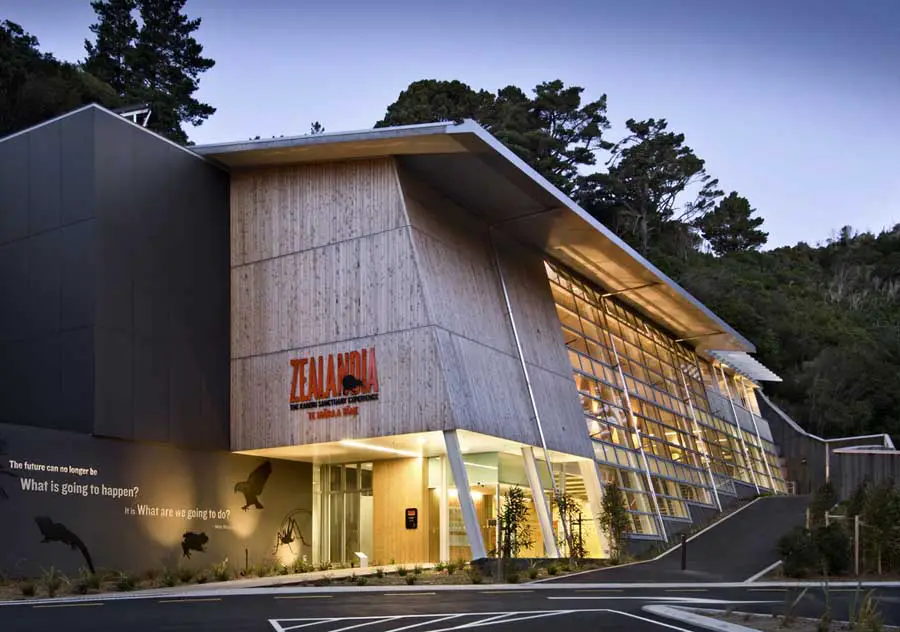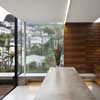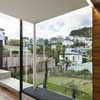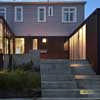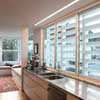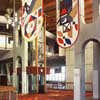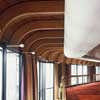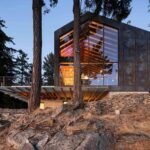Wellington Architecture Awards, NZIA 2010, New Zealand Buildings, Architects
Wellington Architecture Awards – Winners, 2010
NZIA 2010 : New Zealand Architectural Prize Winners
3 Nov 2010
Wellington Architecture Awards
Grunge graffiti and humour in 2010 Wellington Architecture Awards
Unashamedly “grungy” streetwise apartments, the City Gallery, Zoo Hospital and new Supreme Court are among designs celebrated in the 2010 Wellington Architecture Awards.
Supreme Court Wellington:
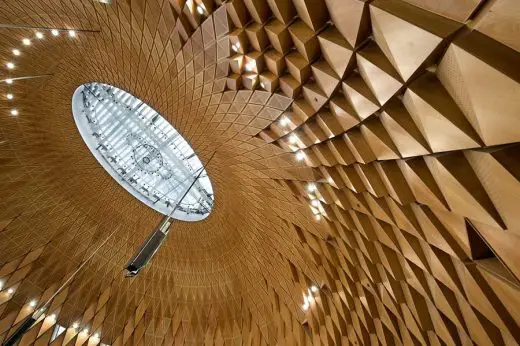
image from NZIA
The Wellington Architecture Awards programme, organised and run by the New Zealand Institute of Architects and supported by Resene, attracted a considerable number of entries, with over 90 submissions, the highest for some years.
Judging panel convenor, architect Michael Melville, said that the standard had been excellent.
“I was surprised by the breadth of architecture that we saw, particularly in residential houses,” he said.
“They ranged from immaculate, very tightly designed houses to those that were much more textured and dealt with the sense of space. There was also quite a bit of humour – particularly in the Kapiti Retreat by Geoff Fletcher Architects.”
Graffiti architecture – grungy and streetwise
The Cubana development, on Cuba Street, by Perry Architects, was among winners in the Residential Architecture – Multiple Housing category.
Jurors praised the project for its “quirky and non-conformist” spaces and described it as “graffiti architecture – grungy and streetwise – and makes no apologies for this”.
City Gallery and Zoo Hospital
The transformation of the City Gallery Wellington by architecture+ was a winner in the Public Architecture category, hailed by jurors as “an example of an architect being given the rare opportunity to revisit a dream established many years in the past”.
They also noted that the gallery, which reopened last year following an 11-month building development, can now, in itself “be viewed as an object and not a building”.
The Zoo Hospital, The Nest, by Warren and Mahoney was also a winner in the category, with jurors admiring the way it operates on extremes – at one level with clinical spaces, air sealed and hermetic, and on the other open air stalls for recovering animals.
Supreme Court
The Supreme Court of New Zealand, also by Warren and Mahoney was among winners in the Interior Architecture category, praised for its impeccable crafting and purity of form
The project also won a Heritage award, described as having brought one of the country’s most distinguished and, more recently, most neglected buildings back to life.
Playful retreat
The Kapiti Retreat at Raumati South, by Geoff Fletcher Architects, a winner in the Small Project Architecture category, was described as having “a constrained playfulness not often seen in New Zealand architecture”.
Jurors were entertained by the quirky details including a subtle fold in the roof, edgeless kitchen bench, floating entry deck and “equally impossible entry canopy”.
Jurors concluded: that the architect had “ended up creating a gem. This is a unique and inspirational piece of architecture”.
Sustainable MAF building with civil emergency function
The MAF Multipurpose Building in Upper Hutt by Stephenson & Turner NZ, provides a communal café and kitchen with lecture facilities but, during a national crisis, could double as a civil emergency centre for infectious disease.
The building, a winner in the Sustainable Architecture category, includes recycled materials, passive and active air management, and storm water swales that give water back to the land – but jurors commented that “possibly the biggest and most sustainable aspect is its dual use”.
Zealandia Visitor Centre:
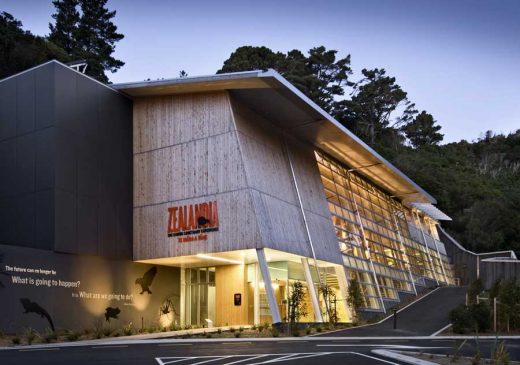
picture from NZIA
Zealandia Visitor Centre
Zealandia Visitor Centre, by Jasmax, was a winner in the Commercial Architecture category, praised as a “powerful and dramatic entry space” and “an excellent accompaniment to a life sustaining sanctuary”.
Victoria University’s Alan MacDiarmid Building, by Jasmax, which includes cutting edge earthquake technology, was a winner in Public Architecture, with judges praising it as entertaining and sophisticated.
The “irresistible” and “unashamedly retro” Customs Brew Bar in Wellington also by Jasmax, won an Interior Architecture award with judges commenting that it could even convert non coffee drinkers.
Residential Architecture – Houses
A Seatoun House by Parsonson Architects was among winners in Residential Architecture – Houses with jurors describing its “impossible cantilever that seems to leap across the harbour” as a “structural wonder”.
The Dixon House at Martinborough by Designgroup Stapleton Elliott was hailed as “a stunning home” and “a delight to experience” while Courtyard House, also in Seatoun, by KebbellDaish, was a “considered and intentional exploration into what is meant by craft architecture”.
A Greytown House, also by Parsonson Architects, was praised as “discretely detailed with striking forms and clearly arranged spaces”.
Ground House at Whitby by Archiscape was described as a “beautifully ‘aware’ piece of architecture and Novak + Middleton Architects were seen to have breathed new life into the Te Rama homestead at Waikanae with beautifully finished stone and timber joinery giving the home “a grandeur befitting its past”.
The Pukurua Bay House, by John Mills Architects, situated “impossibly close to the ocean” was admired as “a textural experience with internal spaces that contradict the simplicity of the exterior form”.
Residential – Multiple Housing and Sustainable Architecture
Winners in Residential Architecture – Multiple Housing also included the Patent 326 Apartments, by Warren and Mahoney, built on the side of a south-facing Wellington hill and maximising stunning views and sunlight.
The Te Ara Hou flats at Newtown by Novak + Middleton Architects were a winner in the Sustainable Architecture category, seen as a “project of the most sustainable kind: retaining and reviving a structure as a flagship public housing project”.
Jurors said that, thanks to careful integration of new features and drastically improved standards, the newly insulated building envelopes would improve residents’ health.
Small Project Architecture
A Peka Peka Beach House by Parsonson Architects was among winners in Small Project Architecture, charming jurors with its “hidden passages leading to clever spaces and even cleverer details.
The Boathouse at Plimmerton by Novak + Middleton Architects was described as simple in its “archetypal form and raw materiality”.
The Arbuckle House Alteration in Thorndon by Mary Daish Architect and Tse:Wallace Architects in association created “simplicity and a calming, successful living space” out of a formerly cluttered house”.
An extension to the Cousins family home in Wellington, by Herriot + Melhuish: Architecture (HMA) was seen to cross “The divide between architecture and crafted joinery” and a new kitchen and shed to a Mount Victoria House by Andrew Sexton Architecture was deemed “a winner” for its simplicity of materials and clarity of presentation.
Jurors
Mr Melville was joined on the jury by Wellington Architects Peter Mitchell and Guy Marriage. Lay juror was Philippa Tocker Executive Director of Museums of Aotearoa.
As well as visiting all shortlisted properties, the judges met with the architects and clients. The buildings were judged against a series of key criteria including their contribution to the advancement of architecture as a discipline and enhancement of the human spirit.
e-architect’s tip to win is Wellington Supreme Court
2010 Wellington Architecture Awards – Judges Citations
Commercial Architecture 2010
Custom Brews Bar
Jasmax


images from NZIA
Even non-coffee drinkers might find themselves converted by this irresistible coffee house. Unashamedly retro, it precariously occupies the hard-to-pin-down space between architecture and interior design. The dulcet brown tones, hardboard realities, vinyl vagaries, and coffee coterie make this a pleasing Wellington cultural experience.
Interior Architecture 2010
Supreme Court Interior
Warren and Mahoney
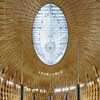
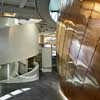
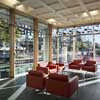
images from NZIA
As the centrepiece of one of New Zealand’s most important judicial buildings, the interior of the Supreme Court delivers a focused environment well suited to our country’s finest legal minds. The minimal modernist lines of the legal library contrast with the sculptural fluidity of the connecting stair. The Supreme Court’s domed central egg hatches the kernel of an ideal: truth, justice and independent jurisprudence. Impeccably crafted with tessellated timber interlocking forms, the central court features a purity of form that is carried through to the intimate detailing.
Heritage 2010
Supreme Court
Warren and Mahoney
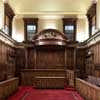
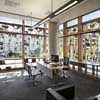

images from NZIA
One of the country’s most distinguished – and more recently, most neglected – buildings, this heritage structure has been brought back to life in a no-expense-spared restoration. Securing this heritage structure against earthquake, wind and weather, the efforts to recreate and retain our judicial heritage have been carried out with appropriate diligence, both inside and out. Superb workmanship and quality refurbishing of heritage elements have produced a court building to last another century.
Residential Architecture – Multiple Housing 2010
Cubana
Perry Architects




images from NZIA
Cubana stands apart from other multi-unit residential projects as it seeks to engage directly with Cuba Street, drawing on the rich palette of materials and ‘architectural moves’ the street offers. Proportionally appropriate, the plan has been teased out of its narrow site and the structure sits back from the street in a comfortable relationship with existing building lines. Spaces are quirky and non-conformist and the architect has provided outdoor living areas with clever levels of privacy. It is graffiti architecture – grungy and streetwise – and makes no apologies for this.
Patent 326 Apartments
Warren and Mahoney
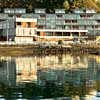
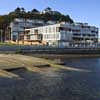
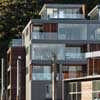
images from NZIA
The side of a south-facing hill is not the easiest site to tackle, but here the architects and developer have succeeded in producing a range of quality dwellings with liveable spaces, stunning views and ingenious arrangements to maximise sunlight.

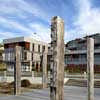
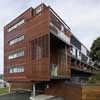
images from NZIA
External faces are respectably clad in veils of softly weathered zinc and timber over a clearly legible structure. The building contains a flexibility of modulation that allows movement and change to relieve the façades. While the development has maximised the amount of units possible on this site, public spaces are generous and don’t feel constrained.
Residential Architecture – Houses 2010
Ground House
Archiscape
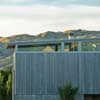
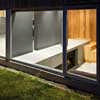
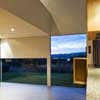
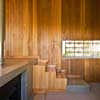
images from NZIA
Ground House exhibits a strong sense of placement with a clear understanding of site and context. As an extension of its landscape it seeks to counter neighbouring vernaculars by exploring what could be, has been, and is, in a beautifully ‘aware’ piece of architecture. Spatial composition works in all dimensions and subtle shifts in surface and volume, whether real or imaginary, make this piece of architecture a pleasure to experience.
Seatoun House
Parsonson Architects

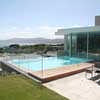
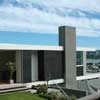
images from NZIA
Visitors to this house are greeted by an impossible cantilever that seems to leap out into the harbour. This structural wonder is counterpoised by a very simple planning arrangement – a ‘T’, where two forms lock together. The cantilever is an open plan public volume which provides entry, eating, and entertaining, while the other is a private sleeping wing that nestles into the bank, hunkering down. The appropriateness of this arrangement plays out in the modulation and language of the forms and relationships each wing has to the landscapes. Capping this off is an incredibly rich punctuation of space.
Greytown House
Parsonson Architects
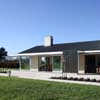
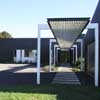
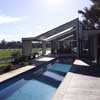
images from NZIA
This is a discretely detailed home with striking forms and clearly arranged spaces connected by interweaving galleries. The house sits proud on the site yet clearly responds to copses of native bush, open paddocks, and the omnipresent mountain range. Rhythm and scale play out in the plan and elevation contrasting positively against the starkness of the materiality. Roof lines and connections to the site, both visual and physical, reinforce the farm style origins of the house.
Dixon House
Designgroup Stapleton Elliott
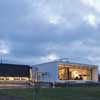
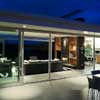
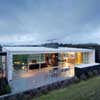
images from NZIA
Located in a manufactured landscape, the architects were free to develop this structure into a stunning home. The experience of spaces is rhythmic with a strong sense of compression at zone interfaces. Axial circulations providing a clear understanding of the plan and tailored with crisp attention to detail, make this home a delight to experience.
Te Rama
Novak + Middleton Architects

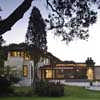
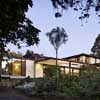
photos from NZIA
This formal and contemporary homestead sits on a site previously occupied by a different house. The heritage evident in the landscapes and surrounding structures has been dealt with sensitively and new life has been breathed into the property.
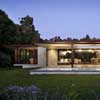
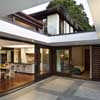
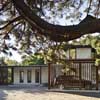
photos from NZIA
Impeccable attention to detail, with beautifully finished stone and timber joinery, give the home a grandeur befitting its past. Spatial planning is deftly managed using traditional galleries and open plan living. Traditions of the homestead are reinvented with sculleries and wet rooms working in parallel to main living spaces. Te Rama touches on one of sustainability’s most controversial of aspects; high carbon footprint weighed against the possibilities of centuries of life. This is a house that will stand the test of time.
Pukerua Bay House
John Mills Architects Ltd



photos from NZIA
Situated impossibly close to the ocean, this home is a textural experience with internal spaces that contradict the simplicity of the exterior form. As you move up through the house privacy increases through the use of translucent layering and discrete staircases. Arrival is celebrated by walking up and through a split island bench conceptually referencing Te Ika A Maui and Te Wai Pounamu. Craft is evident in all aspects of the joinery and no two surfaces appear the same. This is a tactile home that is the fruit of a long established client/architect relationship.
Courtyard House
KebbellDaish
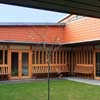
photo from NZIA
The Courtyard House is a considered and intentional exploration into what is meant by craft architecture. The architect has adopted a stance and played it out in all aspects of the design. The programmatic requirements of the client are evident in the discrete response to site, the internalisation of the cloistered courtyard, and the varying degrees of privacy.
Drawing strongly on movements of the past, this is not a reductive home. Every detail has been drawn, redrawn and then made. Spaces compress and expand and you can imagine discovering something new every time you experience it.
Sustainable Architecture 2010
MAF Multipurpose Building
Stephenson Turner NZ Ltd


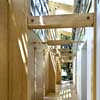
photos from NZIA
From day to day, this building provides a communal café and kitchen with lecture facilities; during a national crisis it doubles as civil emergency centre for infectious disease. Such a programme demands a sensitive and sustainable response and the architects clearly met this brief. Of note are the integration of large totara that terminate galleries; the recycling of materials to create major joinery items; passive and active air management; storm water swales that give water back to the land; and comfortable acoustic and thermal environments. Possibly the biggest and most sustainable aspect is its dual use.
Te Ara Hou Flats
Novak + Middleton Architects
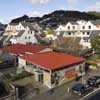
photo from NZIA
The Te Ara Hou flats have been granted a new lease of life. This is a project of the most sustainable kind: retaining and reviving a structure as a flagship public housing project. Thanks to careful integration of new features and drastically improved standards, the newly insulated building envelopes should improve residents’ health. Coordination of landscape and architecture create private outdoor living spaces that have enabled the community to become once more focused and self-fulfilling. The integration of artworks by the children of the community shows the warmth that is being generated by the project.
Public Architecture 2010
Alan MacDiarmid Building
Jasmax
As a full stop to a line of existing University buildings, the Science Faculty’s new facility provides an entertaining and sophisticated urban façade.


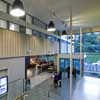
photos from NZIA
The roof form has been as carefully crafted and considered as the other elevations, and the integration of cutting edge earthquake technology befits its role as a home of fine science. Shaded and articulated external surfaces hide the surprisingly spacious interior, which reinforces a fully functional urban environment. The building is a future classic in the making.
City Gallery Wellington
Architecture +
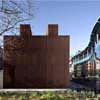
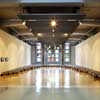

photos from NZIA
This is an example of an architect being given the rare opportunity to revisit a dream established many years in the past. The Gallery entry hall now demarcates an edge of the Civic Square with a new visual link through to Harris Street. It has become a grand and appropriate space for one of the city’s important public institutions. The simply adorned lecture theatre and relocated Hirschfield Gallery occupy a starkly contrasting structure located comfortably between the existing heritage building and City Library. It has a rusting intensity that acts as a counterweight to the functionality of the interior spaces and in itself can be viewed as an object and not a building; a wonderful contradiction.
Zoo Hospital, The Nest
Warren and Mahoney

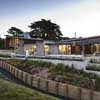


photos from NZIA
In a world of ever decreasing privacy, this project challenges viewers to engage directly with the workings of a veterinarian hospital. There is nothing inappropriate about it. It offers an educational opportunity to talk to and watch the vets as they operate. The building operates on extremes. At one level there are clinical spaces, air sealed and hermetic, and at the other end there are open air stalls for recovering zoo residents. Physical interfaces work smoothly and materials have been appropriately assigned to reflect uses. The building sits well on its site with a discrete level of drama befitting the progressive solution client and architect have provided. The Zoo is to be commended for a forward thinking and visionary approach.
Commercial Architecture 2010
Zealandia Visitor Centre
Jasmax




photos from NZIA
Sited on the boundary between the protected remnants of pre-human Zealandia and the harsh modern world of Karori; the new Visitor Centre huddles up against the hillside trying to look inconspicuous despite its imposing height. The large floor plate requirement of the enclosed exhibition has been cleverly resolved by setting the façade back floor by floor. This has created a powerful and dramatic entry space leading to an exciting meander through the spacious complex. The architect has used a simple palette of materials with legible structures and sustainable environments to create a building that will significantly add to the user experience. It is an excellent accompaniment to a life sustaining sanctuary.
Small Project Architecture 2010
Peka Peka Beach House
Parsonson Architects

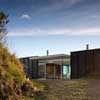


photos from NZIA
It could be described as two boxes with a gap in the middle, but this would be oversimplifying a subtle, impeccably detailed beach house. It has the innate comfort and scale of a well loved bach but surprises the viewer with hidden passages leading to clever spaces and even cleverer details. This is a relaxing haven that makes the most of a marvellous Kapiti Coast perch.
Boat House
Novak + Middleton Architects
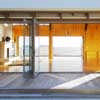
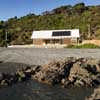
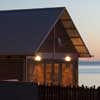
pictures from NZIA
A fortuitous site on the edge of a rugged foreshore has been used as the location for a building of formality and proportion.

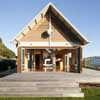
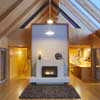
pictures from NZIA
Simple in its archetypal form and raw materiality, the Boat House permits views through and around to create a home away from home that focuses primarily on the sea. Detailing is appropriate for the purity of the form.
Kapiti Retreat
Geoff Fletcher Architect
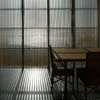

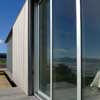
pictures from NZIA
This project has a constrained playfulness not often seen in New Zealand architecture. Quirky details abound: the subtle fold in the roof, the edgeless kitchen bench, the floating entry deck and equally impossible entry canopy, the lantern style screens and the infinity roof in the bathroom.


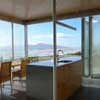
pictures from NZIA
In response to the questions ‘What are you saying and why?’ the answer is simple. Because the architect could, and did. The response to site, client, programme has resulted in the creation of a gem. This is a unique and inspirational piece of architecture.
Cousins Extension
Herriot + Melhuish Architecture (HMA)
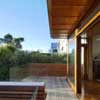


pictures from NZIA
This piece of work crosses the divide between architecture and crafted joinery. Skylights and strictly ordered additions create a tactile and warm extension to a family home. Integrated joinery provide functional internal elements that reinforce space and use. In the same way, the external forms reflect and reinforce the character of the building. Externally the introduction of a formal terracing of steps and decks that consummately sweep away the conflict many Mount Victoria homes have with their back yards. It is a comfortable and well loved addition to a family home.
Mount Victoria Kitchen
Andrew Sexton
Clever connections and strong materiality make this an addition that complements this Mount Victoria home. The kitchen and shed play off against each other across a courtyard where steps connect to an enviable back yard. Simplicity of materials and clarity of presentation have crafted a winner.
Arbuckle House
Mary Daish Architect and Tse Wallace Architects in association
This project has created simplicity and a calming, successful living space out of a formerly cluttered plan. Modest spatial reorganisation and a careful application of appropriate and delicate detailing, combined with artful and fitting materials, have given this home a new life.
Celebrated building from the past:
About the New Zealand Architecture Awards
The New Zealand Architecture Awards programme was established by the New Zealand Institute of Architects to celebrate the innovation, creativity and excellence of architectural projects nationwide.
The awards are open to all NZIA Practices, and projects can be entered into one or more of 10 categories – Public Architecture, Residential Architecture – Housing, Residential Architecture – Multiple Housing, Commercial Architecture, Urban Design, Interior Architecture, Heritage, Small Project Architecture, Sustainability, and Enduring Architecture.
There is no limit to the number of awards the local jury can make in any category.
The programme has three tiers, progressing from the eight regional awards to national recognition – the New Zealand Architecture Awards – and through to the ultimate accolade, the New Zealand Architecture Medal.
All local winners become eligible for consideration for a New Zealand Architecture Award, decided by a national jury, which includes an overseas judge, in early 2011.
In May at the NZIA’s annual Gala Dinner, the finalists for the New Zealand Architecture Medal will be announced, and the winner named later in the evening. Only one New Zealand Architecture Medal is bestowed each year, in recognition of a single built work.
New Zealand Architecture Awards 2010
Location: Wellington, New Zealand
New Zealand Architecture
Contemporary New Zealand Buildings
New Zealand Architecture Designs – chronological list
New Zealand Architecture Studios
Wellington Parliament building
New Zealand Architecture Awards – Regional Winners 2010
Auckland Architecture Awards – winners, NZIA Awards 2010-11
Buildings / photos for Wellington Architecture Awards page welcome

